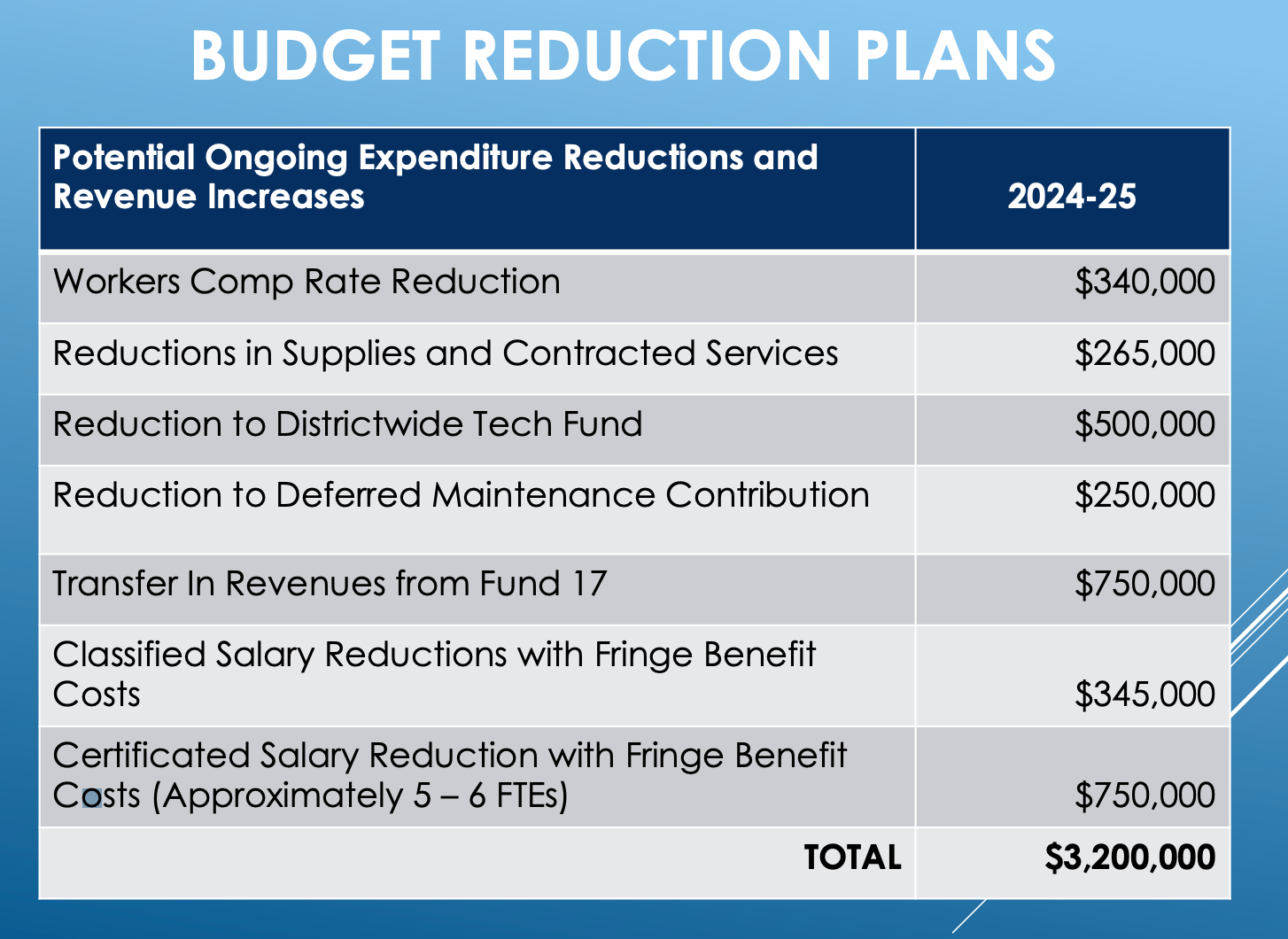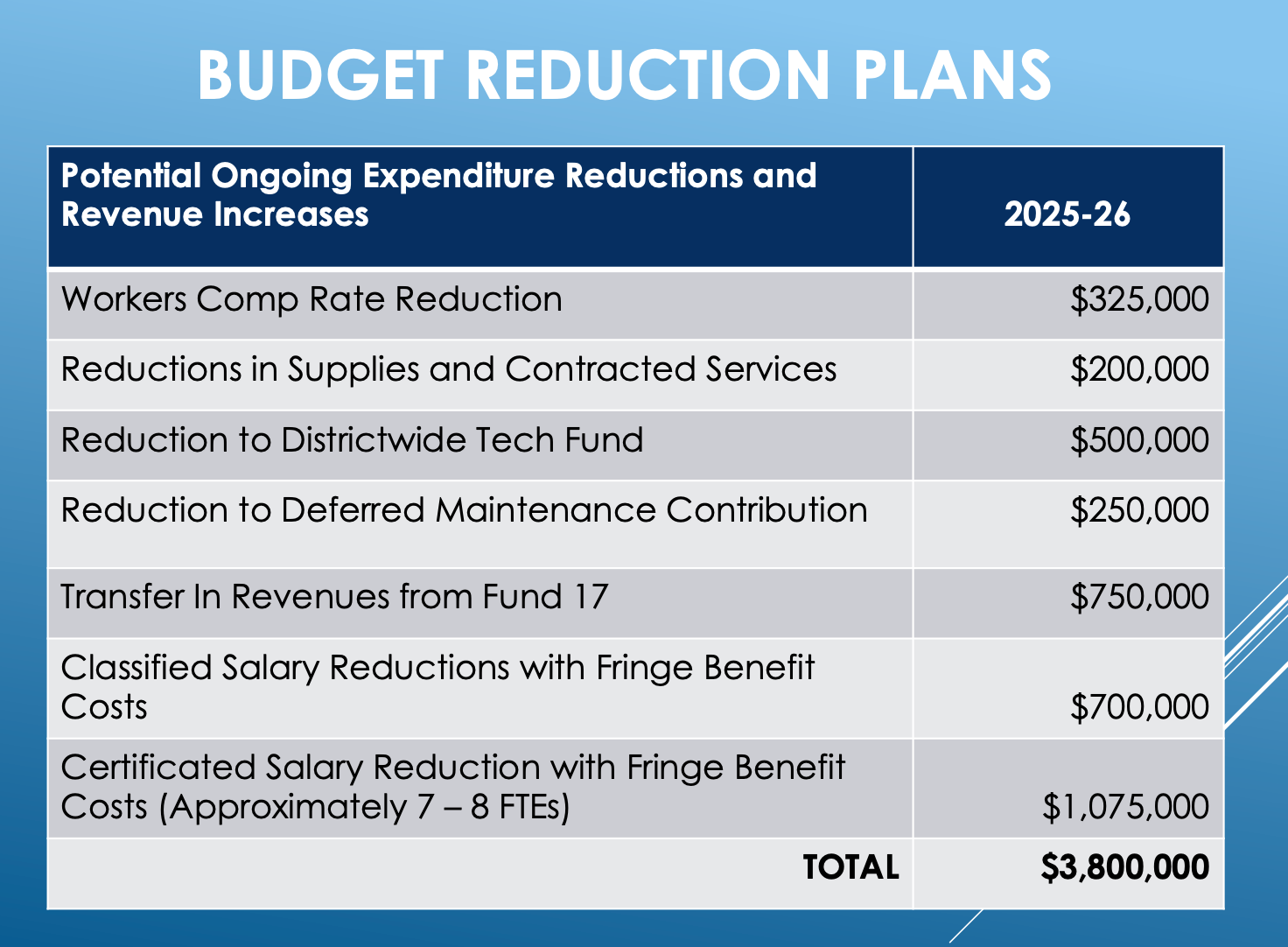Los Alamitos USD preparing for $7 million budget shortfall
While no teacher layoffs are expected for next school year, California's projected $38 billion budget deficit has the district planning to make other cuts for the 2024-25 and 2025-26 school years.
Public school districts across California are anticipating big budget shortfalls for next school year. The Los Alamitos Unified School District is one of them.
Districts are being hit with multiple fiscal challenges at once.
These include an expiration of Covid-era funding, declining student enrollment, increasing absenteeism, and a California budget with a projected deficit of $38 billion to more than $73 billion.
“The impact of the state deficit on our Los Alamitos USD budget is approximately $7 million over the next three years,” Superintendent Andrew Pulver, Ed.D., wrote in an email sent to district families this month.
At the March 12 Los Alamitos USD school board meeting, Elvia Galicia, the district’s Assistant Superintendent of Business Services, detailed an interim budget that forecasts some potentially tough financial times ahead.
“When you start looking at [2024-25], that’s where things get a little sad,” she told board members.
The Los Alamitos USD's interim budget was presented at the March 12 Board of Education meeting.
Public school districts are required to prepare budgets that demonstrate a district has at least 3% of its total General Fund Expenditures in reserves for the current year and two subsequent years. That means districts are likely to take precautionary measures now when submitting their future financial plans.
How Will Los Al USD Fill the Shortfall?
The Los Alamitos USD has around 9,000 students and 1,200 staff members across nine campuses in Los Alamitos, Rossmoor, and Seal Beach.
Dr. Pulver said the district can ensure there will be no teacher layoffs for the next school year “thanks to the prudent financial practices and oversight by our Board of Education.”
For comparison, the Anaheim Union High School District issued layoff notices to more than 100 teachers citing declining enrollment, as reported by Voice of OC.
“The District and the Board of Education are working diligently to keep reductions away from the classroom and continue to provide the best education to our students,” Los Alamitos USD’s Galicia wrote in an email to Spotlight Schools.
But there will be “salary reductions,” for both classified or non-teaching staff and certificated staff, meaning teachers, according to Galicia.
That could mean a reduction of 5 or 6 full-time equivalent teaching positions next year. “These are normal attrition numbers based on potential retirees and declining enrollment projections,” Galicia explained. “The same is true for fiscal year 2025-26, assuming additional retirees and continued enrollment decline.”
Galicia projected an enrollment drop of about 60 students each year for the next two school years during her presentation.


Plans presented at the March 12 board meeting show how the district proposes to meet its financial obligations amid a projected reduction in funding.
“The $7 million shortfall is very concerning,” wrote Nathan Howard, the Interim President for the Los Alamitos Education Association, in an email to Spotlight Schools. But he later said that it was “important not to get lost in the big numbers.”
He said the union is looking over the district’s proposal and is taking a “wait-and-see approach."
“The district and the union are constantly negotiating, and fiscal responsibility is of most importance,” Howard said.
He stressed the two sides are working together in this process which he likened to everyone playing poker with their cards showing. “We are constantly looking for creative solutions,” Howard said. “We’ve done it before, and we’ll do it again.”
In February of 2023, the board approved an agreement with the LAEA that included an 11% salary boost for teachers. The increase consisted of an 8% raise for certificated staff retroactive to July 1, 2022, in addition to an increase of 3% on compensation for the 2023-2024 school year.
In terms of non-teaching staff, Galicia said there would be cuts in the form of reducing overtime pay, extra hours, and substitutes. “For the 2025-26 school year, there could be classified layoffs but it is hard to determine that at this point until the Governor’s budget is proposed for that fiscal year,” she added.
The proposed “salary reductions” would amount to a total savings of $2,870,000 for the district over the next two years, according to Galicia’s presentation.
At the March 12 meeting, the Los Alamitos USD board voted to eliminate 12 classified positions for next year including instructional aides for P.E., math, and science. These were paid for with Covid-era funding that is no longer available, according to the district.
But some of these positions will be coming back next year thanks to funding from school-based parent groups, including a P.E. instructional aide at McGaugh Elementary which the school's Parent Teacher Association is paying for. (Editor’s Note: The author is a board member of McGaugh's PTA).
Other budget reduction suggestions from Galicia include cutting contributions to the district’s technology fund and reducing payments for deferred maintenance.
The plan also includes transferring $1.5 million from the district’s “rainy day” fund, known as Fund 17.
“The Board has maintained this reserve primarily to mitigate potential funding shortfalls or declining enrollment. This would be the first time it's proposed to make a withdrawal,” Galicia explained.
Dr. Pulver noted that the district’s bond money cannot be used to fill the budget gap. “These funds can only be spent on items outlined within the parameters of the Measure G ballot initiative approved by voters in 2018 and cannot be repurposed for other needs.”
Why the Budget Crunch Now?
Part of the difficulty with budgeting right now has to do with something called the cost-of-living adjustment or COLA. No, it’s not soda pop. It’s a source of state funding calculated annually to cover inflation. For many school districts, the COLA translates into millions of dollars a year.
The challenge is that districts have to craft future budgets based on predictions from the state. Sometimes the projections for COLA fluctuate.
For example, the COLA in the 2023-24 budget that took effect July 1, 2023 was 8.2%, as outlined in EdSource. Los Alamitos USD initially was planning for a 3.9% COLA for the 2024-25 school year.
But due to a decline in tax revenue, Governor Gavin Newsom’s January budget plan has the COLA for the 2024-25 school year at .76%. The Legislative Analyst’s Office is recommending “zeroing out the COLA for the upcoming year,” which would translate to a bigger drop in funding.
“It’s a difficult narrative because the governor is touting that he's not cutting education, because COLA is .76 [percent]. So that's an increase from this year's funding to next year,” Dr. Pulver said during the March 12 board meeting.
“However, we're forced to use their scenarios, so every budget prior, we were told it was almost a 4% [increase in COLA],” he continued.
Board President Meg Cutuli summed it up like this: “The COLA we receive gets cut, inflation doesn't get cut.”
What’s Next?
It’s important to keep a few things in mind when thinking about a school district's budgeting process.
First, districts go through budget planning annually and things can change. Gov. Newsom and the legislature will continue to work on reducing the deficit. The Governor will release a revised budget in May, which could reflect changes.
Local school districts will also continue tackling the issue. The Los Alamitos USD is expected to present its updated budget at the June 11 board meeting. That’s also when the public can comment on the proposals.
California must pass its budget by June 15. Local school districts must pass their budget by June 30.
